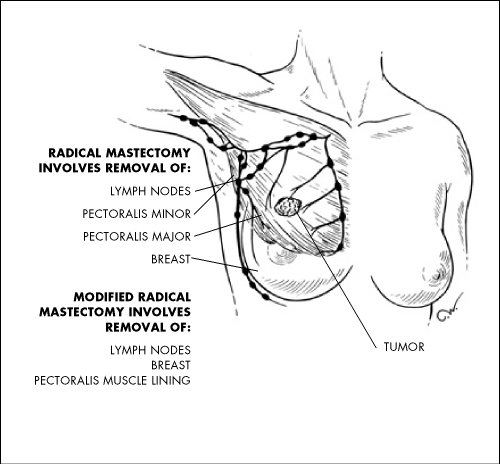Every so often you see a case, or one is presented to you if you represent the plaintiff’s side, where a surviving family member wants to bring a medical malpractice action. And the injury was a suicide.
Those are, to be sure, tough cases on three different levels. First, no matter what happens your client (the surviving family member) will never, ever be happy. No matter what. Second, juries are naturally sympathetic to the medical profession for these cases, and may be loathe to place even partial blame on a doctor, regardless of the treatment (or non-treatment) that took place. And third, the doctor will always raise the defense of professional judgment regarding the treatment.
It is that third point that appeared last week in Thomas v. Reddy, decided by the Appellate Division Second Department. The battle lines were clearly drawn, with the plaintiff claiming a departure from accepted medical practice, and the defendant saying that, if he did anything wrong, it was a mere error of judgment* for which a malpractice case must fail.
The defendant elected to move for summary judgment, a generally rare motion in these cases since issues of fact that need a jury are often plentiful. This was the sad fact pattern:
The plaintiff’s decedent checked into the defendant South Nassau Communities Hospital (hereinafter the hospital) on November 6, 2006, seeking treatment for “manic depression.” The decedent was pregnant at that time, and had a history of suicide attempts, psychiatric hospitalizations, and treatment for bipolar disorder. The hospital treated the decedent several times over the course of the following months in its outpatient program. On February 28, 2007, the decedent told her obstetrician/gynecologist that she hoped that her fetus would not have a heartbeat during a sonogram, and that she would use her husband’s gun to kill herself if she could find it. She was referred to the hospital’s inpatient unit that day.
So what did Dr. Reddy (allegedly ) do wrong? The Court continued:
The defendant Dr. Stanley Reddy took over the decedent’s treatment on March 12, 2007, when the physician who had been treating the decedent during her admission went on vacation. At his deposition, Dr. Reddy admitted that he had never seen the decedent’s outpatient records. [*2]Further, Dr. Reddy testified that he had never seen a progress note, dated March 11, 2007, stating that the decedent was having “altered thought toward [her b]aby,” and that her plan of care had not been met, and that no one had told him that the plan of care was not being met. Dr. Reddy discharged the decedent on the afternoon of March 14, 2007. Later that night, the decedent killed herself by suffocating herself with a plastic bag.
And this set up the classic fight in any malpractice case: Was it a departure from care to discharge the patient or was it a judgment decision for which he is immune from suit?* In making a motion for summary judgment, the defendant:
…established, prima facie, their entitlement to judgment as a matter of law by submitting the affidavit of an expert psychiatrist, who concluded that the appellants did not depart from good and accepted medical practice in making the decision to discharge the decedent.
And the plaintiff, unsurprisingly, had an expert to say the opposite:
…in opposition, the plaintiffs submitted an affidavit from an expert who opined, inter alia, that the appellants had departed from accepted standards of psychiatric care by making an incomplete and superficial assessment of the decedent’s mental condition prior to discharge. Through this affidavit, and Dr. Reddy’s deposition testimony, the plaintiff raised a triable issue of fact as to whether the appellants exercised something less than professional judgment in deciding to discharge the decedent
The Court did the analysis (citations omitted), which led to the obvious conclusion:
A psychiatrist may not be held liable for a mere error in professional judgment. However, a psychiatrist may be held liable where a treatment decision was based on ” something less than a professional medical determination’.” “A decision that is without proper medical foundation, that is, one which is not the product of a careful examination, is not to be legally insulated as a professional medical judgment.”
With those facts, there seem to be two readily apparent points to make: First, while the case is undeniably sad, from a lawyer’s perspective it is a good model to teach with as it sharply delineates the principle way that malpractice cases are tried and defended. And second, don’t bring appeals of summary judgment decisions when you have a sharp issue of fact for a jury to decide.
(Hat tip: MondayMonday by Jay Breakstone)
Addendum (8/4/11): This is a good spot to also set forth the law, as it is read to the jury. What follows comes from New York’s Pattern Jury Instructions on the law of medical malpractice. I put in bold the part about errors of judgment being a defense to the accusation that s/he departed from the standard of care.
PJI 2:150 Malpractice—Physician
Malpractice is professional negligence and medical malpractice is the negligence of a doctor. Negligence is the failure to use reasonable care under the circumstances, doing something that a reasonably prudent doctor would not do under the circumstances, or failing to do something that a reasonably prudent doctor would do under the circumstances. It is a deviation or departure from accepted practice.
A doctor who renders medical service to a patient is obligated to have that reasonable degree of knowledge and skill that is expected of an (average doctor, average specialist) who (performs, provides) that (operation, treatment, medical service) in the medical community in which the doctor practices. ([If there is evidence that the doctor should have complied with standards that exceed the standards of the medical community in which the doctor practices, the following should be charged:] The doctor must also comply with minimum (statewide, national) standards of care.)
The law recognizes that there are differences in the abilities of doctors, just as there are differences in the abilities of people engaged in other activities. To practice medicine a doctor is not required to have the extraordinary knowledge and ability that belongs to a few doctors of exceptional ability. However every doctor is required to keep reasonably informed of new developments in (his, her) field and to practice (medicine, surgery) in accordance with approved methods and means of treatment in general use. A doctor must also use his or her best judgment and whatever superior knowledge and skill (he, she) possesses, even if the knowledge and skill exceeds that possessed by the (average doctor, average specialist) in the medical community where the doctor practices.
By undertaking to perform a medical service, a doctor does not guarantee a good result. The fact that there was a bad result to the patient, by itself, does not make the doctor liable. The doctor is liable only if (he, she) was negligent. Whether the doctor was negligent is to be decided on the basis of the facts and conditions existing at the time of the claimed negligence.
[This paragraph should only be charged when there is evidence that the doctor made a choice among medically acceptable alternatives. See Caveat 2 below:] A doctor is not liable for an error in judgment if (he, she) does what (he, she) decides is best after careful evaluation if it is a judgment that a reasonably prudent doctor could have made under the circumstances. In other words, a doctor is not liable for malpractice if he or she chooses one of two or more medically acceptable courses of action.
If the doctor is negligent, that is, lacks the skill or knowledge required of (him, her) in providing a medical service, or fails to use reasonable care in providing the service, or fails to exercise his or her best judgment, and such failure is a substantial factor in causing harm to the patient, then the doctor is responsible for the injury or harm caused.
[Where appropriate, add:]
A doctor’s responsibility is the same regardless of whether (he, she) was paid.
Addendum #2 (8/15/11): Just two weeks after putting up this post, the a Court of Claims judge found for the plaintiff in an attempted suicide case against the State (
Acerbo v. State of New York). While the Court could have found the Claimant partially liable, it found the State 100% liable. The Claimant was delusional and had a history of prior suicide attempts, and the institution was found to have violated its own policies. The brief summary (much, much more at the link):
[Claimant] attempted suicide by hiding in a bathroom and cutting himself with plastic knives he had obtained from the facility’s dining room. Claimant contends that Rockland’s failure to follow its own policy and procedure, which required that all utensils be accounted for in the facility’s dining room, enabled him to obtain the knives he used to attempt suicide. He also maintains that Rockland did not provide him with sufficient psychiatric care while his treating psychiatrist, Dr. Abkari, was on vacation, and that Rockland failed to recognize and treat claimant’s symptoms which indicated that his mental state was deteriorating.
 Public Citizen released a report this week on the abject failure of a $250,000 medical malpractice cap put in place by Texas in 2003. Why is this is important? Because as I discussed two days ago, so-called conservatives are trying to expand federal power to implement a similar scheme on the federal level.
Public Citizen released a report this week on the abject failure of a $250,000 medical malpractice cap put in place by Texas in 2003. Why is this is important? Because as I discussed two days ago, so-called conservatives are trying to expand federal power to implement a similar scheme on the federal level.


